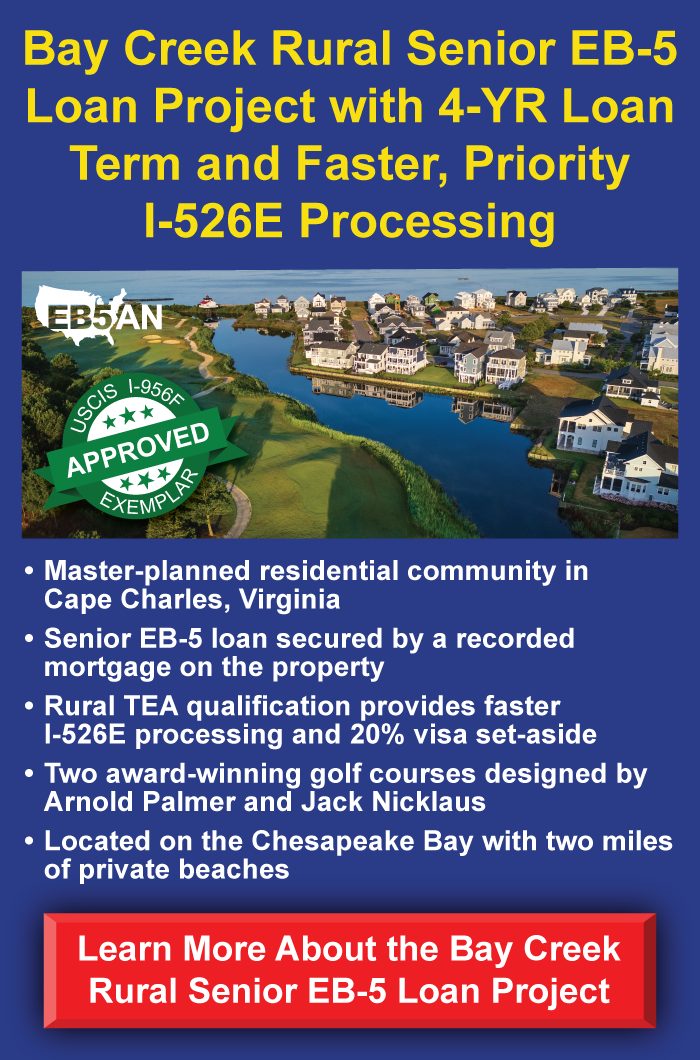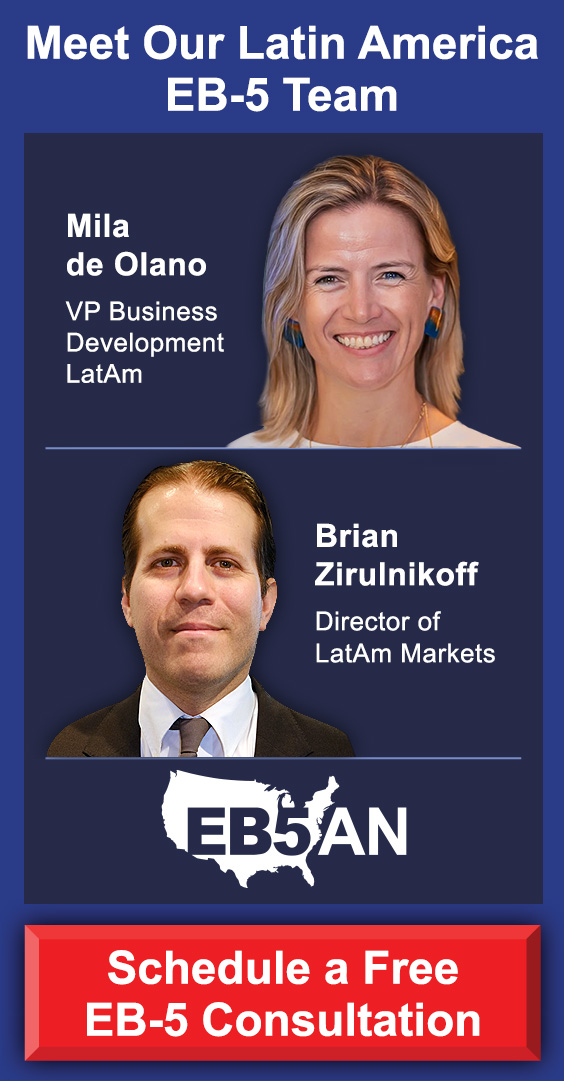The foundation of the EB-5 Immigrant Investor Program is the job creation the program promotes. While much of the attention around EB-5 focuses on investment amounts and immigration procedures, it is ultimately the jobs created through an investor’s funds that ultimately determine that investor’s success.
But job creation in the EB-5 context isn’t limited to simply hiring employees. In fact, many of the jobs that count toward meeting EB-5 thresholds are not directly visible—they are instead estimated using economic models that calculate indirect and induced employment effects based on tools known as economic multipliers.
To help investors better understand how these calculations work, this article explains how jobs are created through EB-5 projects and how economic models and multipliers play a role in the EB-5 process.
The EB-5 Program: A Quick Overview
Defining Job Creation in EB-5
What Are Economic Multipliers?
The Tools Behind the Numbers
Why Economic Multipliers Matter to Investors
What Investors Should Ask While Doing Due Diligence
The Multiplier Effect of EB-5
The EB-5 Program: A Quick Overview
Created in 1990, the EB-5 program was designed to stimulate the U.S. economy through capital investment from foreign nationals. In return, investors and their immediate family members are eligible for lawful permanent residency, provided they meet certain criteria.
One of the central requirements of the EB-5 program is job creation. Each investor must contribute capital—$800,000 if investing in a targeted employment area (TEA) project or $1,050,000 for non-TEA projects—to a new commercial enterprise, and that capital must be used to create at least 10 full-time jobs for qualified U.S. workers. These jobs also must be sustained for a minimum period of time, typically about two years.
While investors may pursue a direct investment, such as by starting or funding their own business, most choose to invest through a USCIS-designated regional center. Regional centers pool EB-5 capital to fund larger-scale development projects—and crucially, they allow for broader methods of counting job creation, including those calculated through economic modeling.
Defining Job Creation in EB-5
Jobs created through EB-5 investments fall into three categories: direct, indirect, and induced jobs. As mentioned above, which jobs you can count toward your job creation total depends on whether you’ve invested directly or through a regional center.
Direct Jobs
Direct jobs comprise the actual employees hired by the business. These must be full-time, permanent jobs.
As an example, if you’ve invested in the construction and development of a hotel, direct jobs could include the construction workers building the project and the staff working at the hotel, so long as these positions are full-time and permanent.
For direct investments, these are the only jobs that can be counted toward an investor’s total.
Indirect Jobs
These jobs are created indirectly at other businesses that supply goods and services to the EB-5-funded project. Using the hotel example above, these may include the jobs created due to the lumber needed for the construction of the project.
Induced Jobs
This last category of jobs deals with those created due to the increased household spending of employees who earn income from either direct or indirect jobs. For example, a construction worker might spend their wages at local stores, supporting retail jobs in the process.
In the regional center model, investors can be credited with the creation of all three job types, which is one of the reasons most investors opt for this kind of investment.
Another important difference emerges when counting each type of job: While direct jobs are typically proven through conventional means like W-2s and payroll records, indirect and induced jobs must be proven through economic models. This is where economic multipliers come into play.
What Are Economic Multipliers?
Economic multipliers are a concept from regional economics that measure how an initial investment impacts the broader economy. Essentially, they describe how one dollar of spending can circulate and generate additional economic activity, creating a ripple effect.
For example, if a real estate project spends $1 million on local construction services, those construction businesses will then spend that money elsewhere, such as through buying supplies. The multiplier estimates how many secondary jobs and additional spending that amount will generate across different sectors.
In EB-5, these multipliers are used to estimate the total number of indirect and induced jobs created by a project, making them a vital component of the EB-5 process.
The Tools Behind the Numbers
To calculate job creation using multipliers, EB-5 regional centers typically rely on established modeling tools, such as IMPLAN or RIMS II, both of which use detailed economic data specific to geographic regions and industries. Specifically, these models take inputs like total project costs, construction duration, location, and operating revenues to generate job estimates.
Let’s use a real estate development as an example.
A $50 million project may generate 30 direct jobs (construction and project management roles), 100 indirect jobs (suppliers and equipment vendors), and 50 induced jobs (local services supported by worker spending).
In total, that’s 180 jobs—enough to support 18 EB-5 investors under the regional center model.
Economic modeling is especially useful in large infrastructure or real estate developments where many of the job effects are not visible but still measurable through regional economic impacts.
Why Economic Multipliers Matter to Investors
For EB-5 investors, job creation isn’t just a regulatory requirement—it’s the linchpin of their immigration success. If a project fails to produce enough qualifying jobs, the investor may be denied permanent residency. This makes the integrity and accuracy of job projections critically important.
A reliable EB-5 project should include the following:
- A professional economic impact report that outlines how jobs are calculated
- Conservative assumptions that don’t overstate the number of jobs
- A job creation buffer, typically 20%–30% more jobs than required
- A clear and realistic timeline for job creation, aligned with USCIS expectations
Investors should also pay attention to how jobs are allocated among participants in the project, especially in cases where the total number of jobs created is only slightly above the required threshold.
What Investors Should Ask While Doing Due Diligence
Given the central role of job creation in EB-5 success, potential investors should perform thorough due diligence.
Before committing their funds, EB-5 investors should ask a number of important questions:
- Has a third-party economist prepared a job creation analysis?
- What assumptions were used in the model? Are these assumptions realistic/conservative?
- Does the project allow for a buffer of extra jobs?
- What are the contingencies if the project scope or budget changes?
Due to the complexities involved in the process, partnering with experienced EB-5 attorneys and financial consultants is strongly advised.
The Multiplier Effect of EB-5
Economic multipliers bring to life the powerful economic ripple that an EB-5 investment can create. What begins as a capital infusion into a construction project or business expansion ultimately stimulates entire communities, supporting suppliers, creating consumer demand, and helping local economies grow.
For investors, understanding how job creation is measured—and how economic multipliers make this possible—is key to choosing a strong, compliant EB-5 project. When done right, EB-5 offers a win-win: a path to U.S. residency for the investor and tangible, job-generating economic development for the United States.
And one of the first steps of the process is working with a reliable regional center.
EB5AN has helped more than 2,700 families from 70+ countries become lawful permanent residents of the United States. Our expert team has more than a decade of experience, and we offer our clients first-rate, low-risk EB-5 regional center projects with a 100% USCIS project approval rate.
If you would like to know more about your EB-5 investment options, book a free call with our expert team today.











